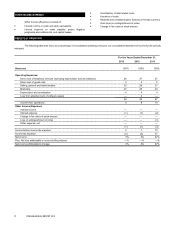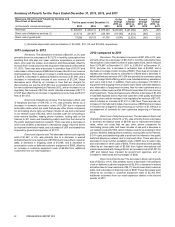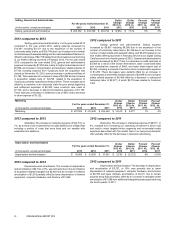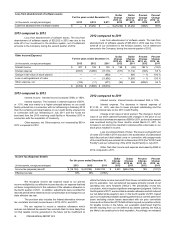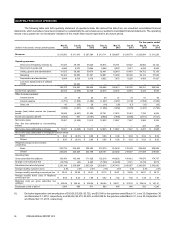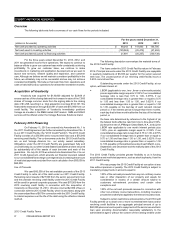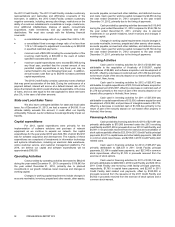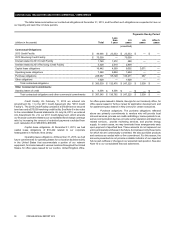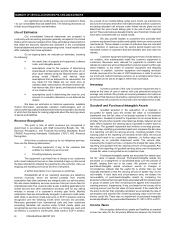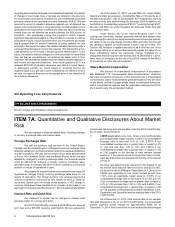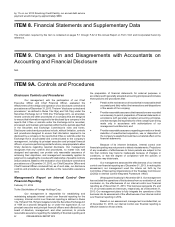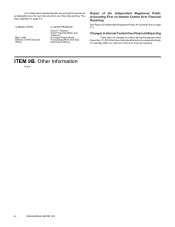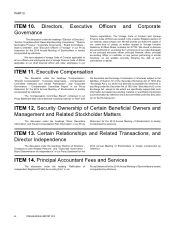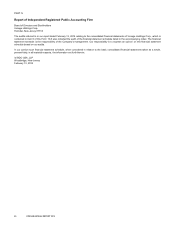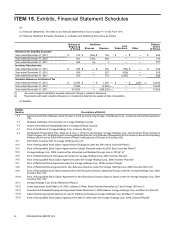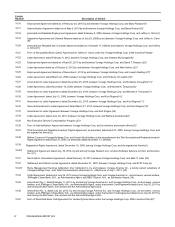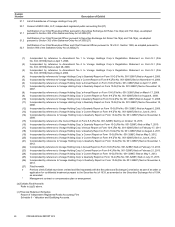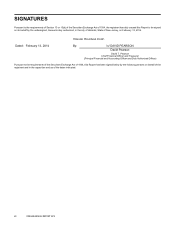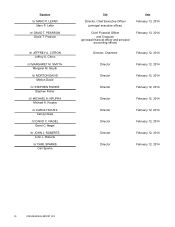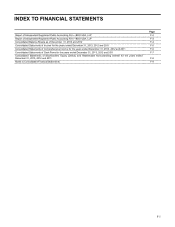Vonage 2013 Annual Report Download - page 47
Download and view the complete annual report
Please find page 47 of the 2013 Vonage annual report below. You can navigate through the pages in the report by either clicking on the pages listed below, or by using the keyword search tool below to find specific information within the annual report.
41 VONAGE ANNUAL REPORT 2013
reporting bases and the tax bases of our assets and liabilities. Any effects
of changes in income tax rates or tax laws are included in the provision
for income taxes in the period of enactment. Our net deferred tax assets
primarily consist of net operating loss carry forwards (“NOLs”). We are
required to record a valuation allowance against our net deferred tax
assets if we conclude that it is more likely than not that taxable income
generated in the future will be insufficient to utilize the future income tax
benefit from our net deferred tax assets (namely, the NOLs) prior to
expiration. We periodically review this conclusion, which requires
significant management judgment. If we are able to conclude in a future
period that a future income tax benefit from our net deferred tax assets
has a greater than 50 percent likelihood of being realized, we are
required in that period to reduce the related valuation allowance with a
corresponding decrease in income tax expense. This will result in a non-
cash benefit to our net income in the period of the determination. In the
future, if available evidence changes our conclusion that it is more likely
than not that we will utilize our net deferred tax assets prior to their
expiration, we will make an adjustment to the related valuation allowance
and income tax expense at that time. In the fourth quarter of 2011, we
released $325,601 of valuation allowance (see Note 5. Income Taxes).
In subsequent periods, we would expect to recognize income tax
expense equal to our pre-tax income multiplied by our effective income
tax rate, an expense that was not recognized prior to the reduction of
the valuation allowance.
Net Operating Loss Carryforwards
As of December 31, 2013, we had NOLs for United States
federal and state tax purposes, including the NOLs of Vocalocity as of
the date of acquisition, of $715,524 and $251,627, respectively, expiring
at various times from years ending 2013 through 2033. In addition, we
had NOLs for Canadian tax purposes of $14,171 expiring through 2027.
We also had NOLs for United Kingdom tax purposes of $41,423 with
no expiration date.
Under Section 382 of the Internal Revenue Code, if we
undergo an “ownership change” (generally defined as a greater than
50% change (by value) in our equity ownership over a three-year period),
our ability to use our pre-change of control NOLs and other pre-change
tax attributes against our post-change income may be limited. The
Section 382 limitation is applied annually so as to limit the use of our
pre-change NOLs to an amount that generally equals the value of our
stock immediately before the ownership change multiplied by a
designated federal long-term tax-exempt rate. At December 31, 2013,
there were no limitations on the use of our NOLs except for the NOLs
of Vocalocity as of the date of acquisition.
Share-Based Compensation
We account for share-based compensation in accordance
with FASB ASC 718, “Compensation-Stock Compensation”. Under the
fair value recognition provisions of this pronouncement, share-based
compensation cost is measured at the grant date based on the fair value
of the award, reduced as appropriate based on estimated forfeitures,
and is recognized as expense over the applicable vesting period of the
stock award using the accelerated method.
OFF-BALANCE SHEET ARRANGEMENTS
We do not have any off-balance sheet arrangements.
ITEM 7A. Quantitative and Qualitative Disclosures About Market
Risk
We are exposed to financial market risks, including changes
in currency exchange rates and interest rates.
Foreign Exchange Risk
We sell our products and services in the United States,
Canada, and the United Kingdom. Changes in currency exchange rates
affect the valuation in our financial statements of the assets and liabilities
of these operations. We also have a portion of our sales denominated
in Euros, the Canadian Dollar, and the British Pound, which are also
affected by changes in currency exchange rates. Our financial results
could be affected by changes in foreign currency exchange rates,
although foreign exchange risks have not been material to our financial
position or results of operations to date.
We prepared a sensitivity analysis to determine the impact of
hypothetical changes foreign currency exchange rates have on our
results of operations. The foreign currency rate analysis assumed a
uniform movement in currencies by 10% relative to the U.S. Dollar on
our results. Based upon the results of this analysis, a 10% change in
currency rates would have resulted in an increase or decrease in our
earnings for the year ended December 31, 2013 of approximately $500.
Interest Rate and Debt Risk
Our exposure to market risk for changes in interest rates
primarily relates to our long-term debt.
Our 2013 Credit Facility consists of a $70,000 senior secured
term loan and a $75,000 revolving credit facility. We are exposed to
interest rate risk since amounts payable under the 2013 Credit Facility,
at our option, bear interest at:
> LIBOR (applicable to one-, two-, three- or six-month periods)
plus an applicable margin equal to 3.125% if our consolidated
leverage ratio is less than 0.75 to 1.00, 3.375% if our
consolidated leverage ratio is greater than or equal to 0.75
to 1.00 and less than 1.50 to 1.00, and 3.625% if our
consolidated leverage ratio is greater than or equal to 1.50
to 1.00, payable on the last day of each relevant interest
period or, if the interest period is longer than three months,
each day that is three months after the first day of the interest
period, or
> the base rate determined by reference to the highest of (a)
the federal funds effective rate from time to time plus 0.50%,
(b) the prime rate of JPMorgan Chase Bank, N.A., and (c) the
LIBOR rate applicable to one month interest periods plus
1.00%, plus an applicable margin equal to 2.125% if our
consolidated leverage ratio is less than 0.75 to 1.00, 2.275%
if our consolidated leverage ratio is greater than or equal to
0.75 to 1.00 and less than 1.50 to 1.00, and 2.625% if our
consolidated leverage ratio is greater than or equal to 1.50
to 1.00, payable on the last business day of each March, June,
September, and December and the maturity date of the 2013
Credit Facility.
As of December 31, 2013, if the interest rate on our variable
rate debt changed by 1% on our 2013 Credit Facility, our annual debt
service payment would change by approximately $500. As of
December 31, 2013, if the interest rate on our variable rate debt changed
Table of Contents


